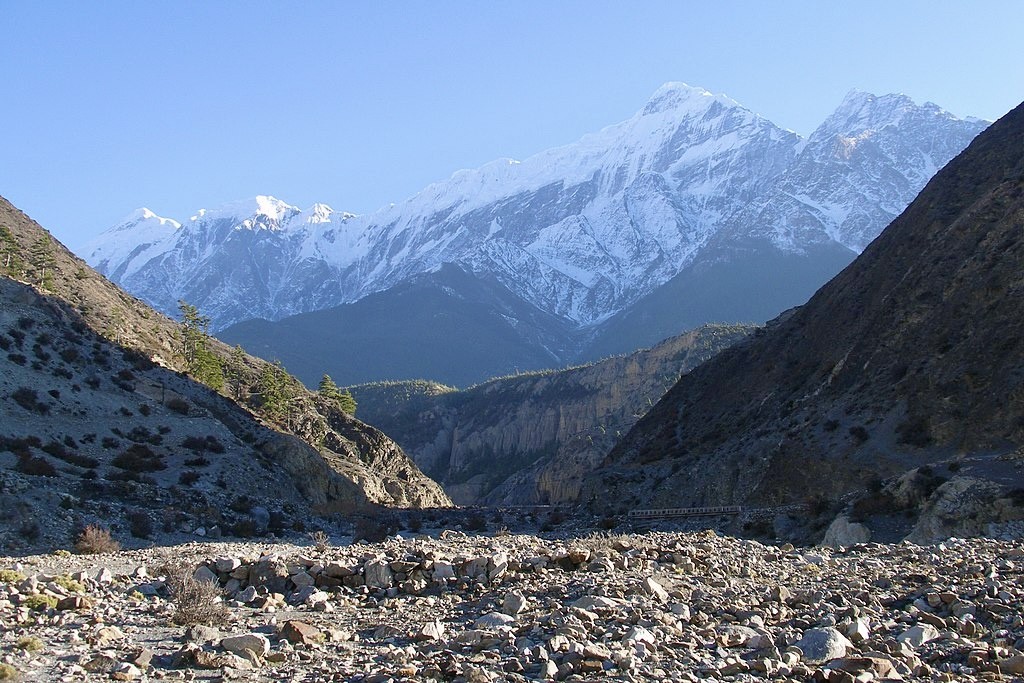The Nilgiri Himal in the Annapurna massif includes 7,061m Nilgiri North, 6,940m Nilgiri Central, and 6,839m Nilgiri South. Nilgiri North and Nilgiri South are considered main peaks, while Nilgiri Central is a subsidiary peak.
Alpinists rarely visit this range, with the first summits in the 1960s and most expeditions in the 1980s.
Nilgiri North
The highest Nilgiri peak, 7,061m Nilgiri North, had its first successful ascent in 1962.
Kees Egeler from the Netherlands organized this expedition, which included five geologists and a doctor, as well as three clients (who were siblings). Renowned French mountaineer Lionel Terray, and Wangdi Sherpa from Nepal, rounded out the team.
For the Dutch, it was their first Himalayan expedition.
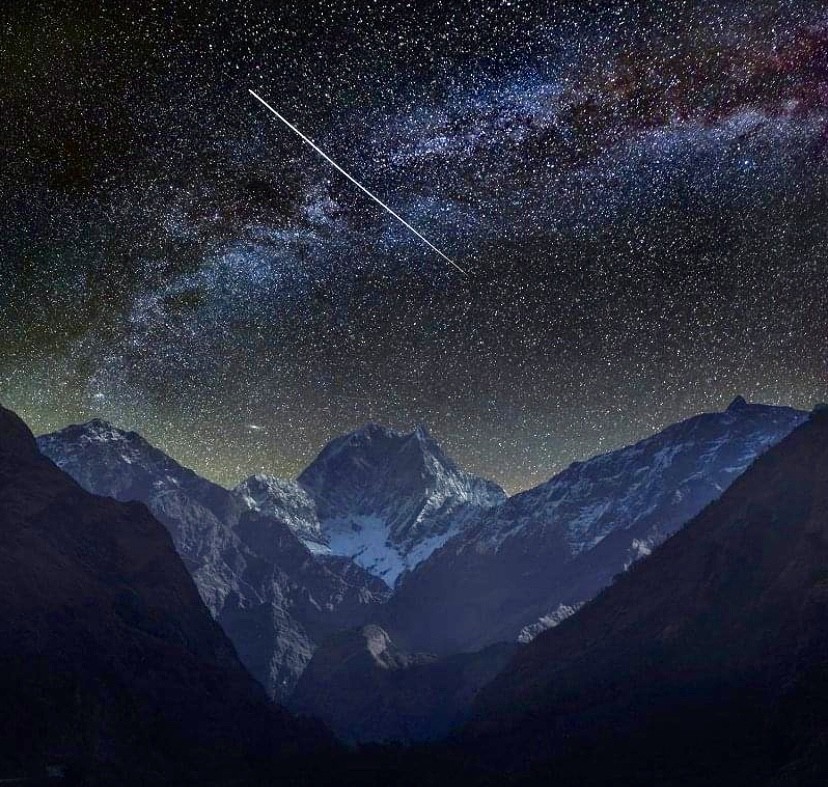
Nilgiri North. Photo: Bob A. Schelfhout Aubertijn
On October 19, Terray and Wangdi Sherpa led the way to the summit, with the three Dutch brothers, Holger, Paul, and Peter Van Lookeren Campagne, following behind. They ascended along a north face/west ridge route, placed three camps, and fixed ropes during the climb.
Sixteen expeditions have attempted Nilgiri North. The most recent attempt was this autumn by a Japanese party on the west ridge. Twenty-six climbers have summited, most recently in the autumn of 1990.
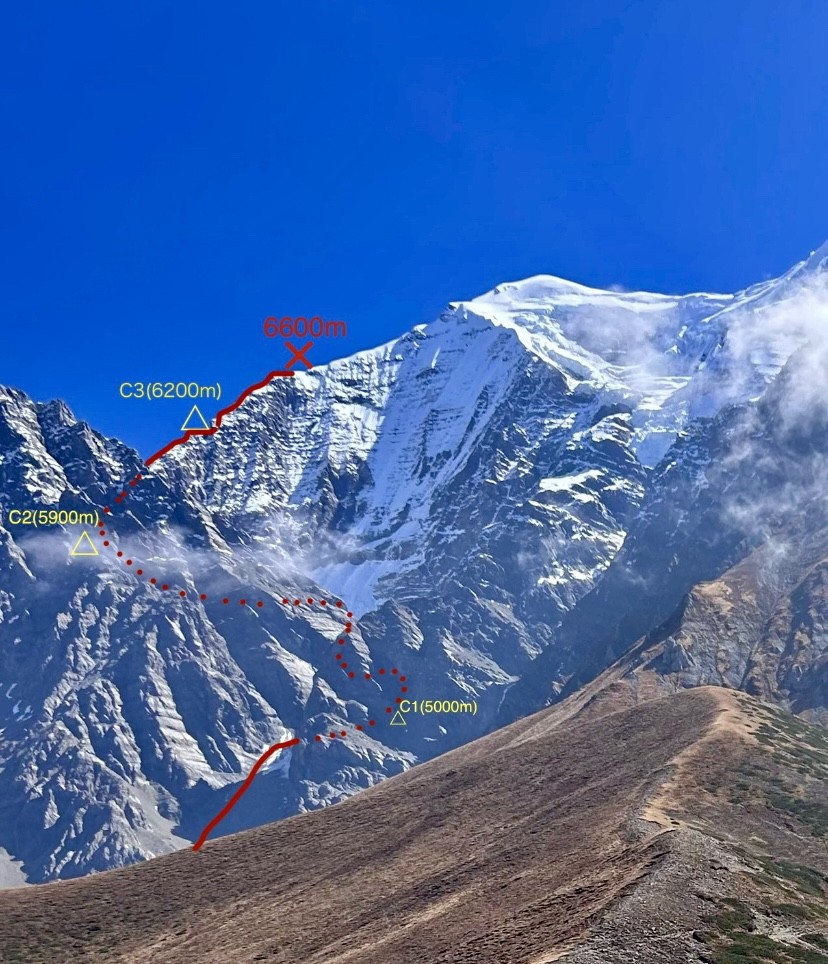
The recent attempt on the west ridge of Nilgiri North. Photo: Tatsuya Aoki
Those successful climbers belonged to five expeditions. After the first ascent in 1962, a Japanese team summited in the spring of 1981 via the east ridge. Then another Japanese expedition topped out in the spring of 1982 by the southeast face.
In the autumn of 1983, a joint Australian/New Zealand expedition also climbed via the southeast face. Finally, in the autumn of 1990, a South Korean expedition, including three Sherpas, summited via a small ridge on the same face.
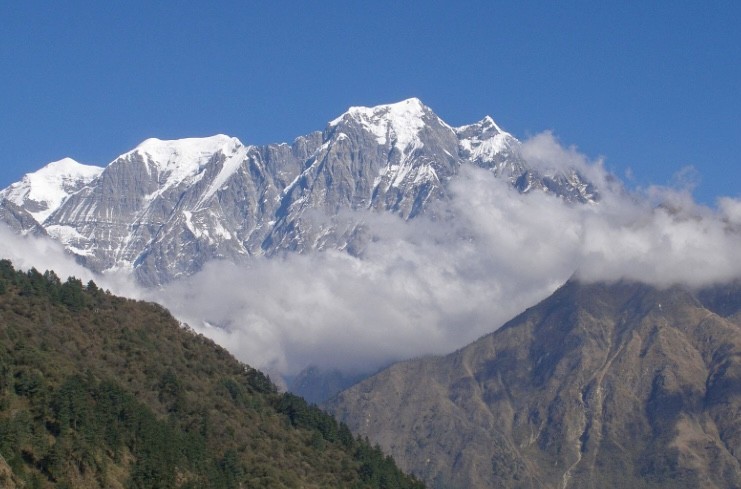
Nilgiri North on the far left, Nilgiri Central and Nilgiri South in the center. Taken from Lete, a village in the Kali Gandaki Valley. Photo: Wikimedia
Nilgiri South
Nilgiri South (6,839m) saw its first ascent in the autumn of 1978. Led by Kazuo Mitsui, the Japanese team from Shinshu University consisted of Taichi Fujimatsu, Yoshiaki Kato, Nobuhito Morota, Seiji Tanaka, and Hideki Yoshida. They summited on October 10 via the east ridge from the north.
Seven more teams have attempted Nilgiri South. Japanese teams tried in the spring and autumn of 1981 and again in 1984 and 1985.
Slovenians Tadej Golob and Dusan Polenik attempted its south face in the autumn of 1996 but had to retreat from 5,400m because of deep snow and avalanches, according to The Himalayan Database.
Three years later, in the autumn of 1999, Golob returned with four Slovenian climbers to attempt the south face via the southwest ridge. They eventually withdrew at 6,600m because of bad weather and frostbite.
An alpine-style ascent of the south face
The last expedition to Nilgiri South was in the autumn of 2015.
The Austrian Nilgiri South Expedition was a small, three-member party led by the late Hansjorg Auer. With Alexander Blumel and Gerhard Fiegl, Auer ascended the south face to the west face/south ridge/northwest ridge of Nilgiri “Spire” (southeastern peak). From there, they took the east ridge of Nilgiri South and topped out on October 25 after three bivouacks.
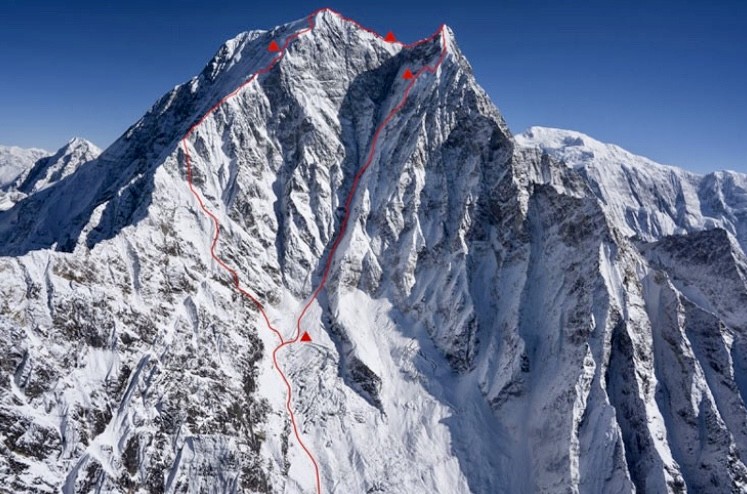
The ascent and descent route on the south face of Nilgiri South by Hansjorg Auer, Gerhard Fiegl, and Alexander Blumel in 2015. Photo: Hansjorg Auer
During the climb, the climbers overcame huge difficulties, including a ramp-like 60° average slope with some 90° sections. Other sections were up to M5 and 70°.
This was the first ascent of the south face of Nilgiri South, the first ascent of the southeastern peak, and the first traverse of both peaks.
Acute mountain sickness
But before they summited, there were some worrying signs. On October 24, the trio reached a nice flat bivouac spot at 6,740m, just below the main summit. But Fiegl had a bad night, showing signs of acute mountain sickness (AMS).
The next day, they started the last section to the summit. Fiegl climbed very slowly. After summiting at 11 am, they started the descent via the southwest ridge. At about 6,500m, Fiegl was exhausted, so Auer and Blumel decided to stop at 3 pm to bivouac and help him recover. Fiegl no longer seemed very aware of the situation.
On October 26, the forecast predicted 75kph winds.
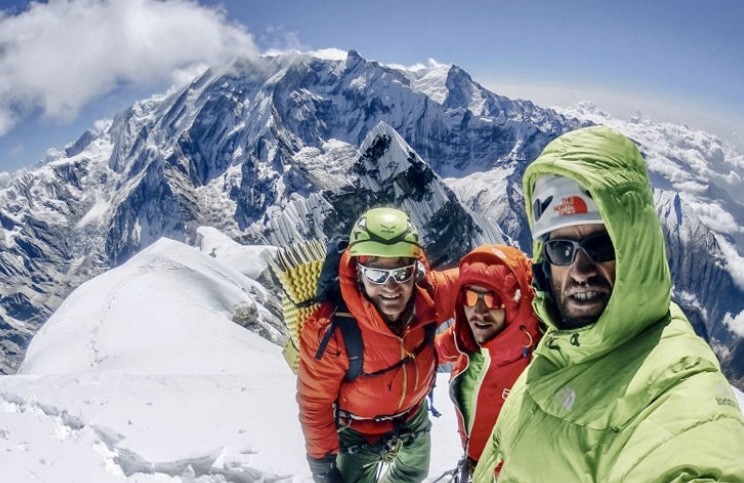
The Austrian team on the summit of Nilgiri South. Photo: Hansjorg Auer
A fatal fall
After a cold night, the wind got stronger. At 8 am, they started to descend through a snow and ice ridge traverse. They climbed unroped to move as fast as possible. At 6,100m, while downclimbing, Fiegl fell down the southeast side of the peak. He dropped 800m down a couloir.
Auer and Blumel, in shock, rappeled down to an icefield and then continued downclimbing. All the way, they found traces of Fiegl’s fall. At 6 pm, the duo reached the glacier. But there was nothing they could do. Fiegl was dead.
Fiegl’s family wanted the body returned home. Although Auer and Bluemel told them that there was nothing to collect after such a destructive fall, a helicopter rescue was nevertheless organized. However, because of heavy snow even at 3,500m, the search proved impossible.
To date, nine climbers have summited Nilgiri South (six Japanese climbers in 1978 and three Austrians in 2015.)
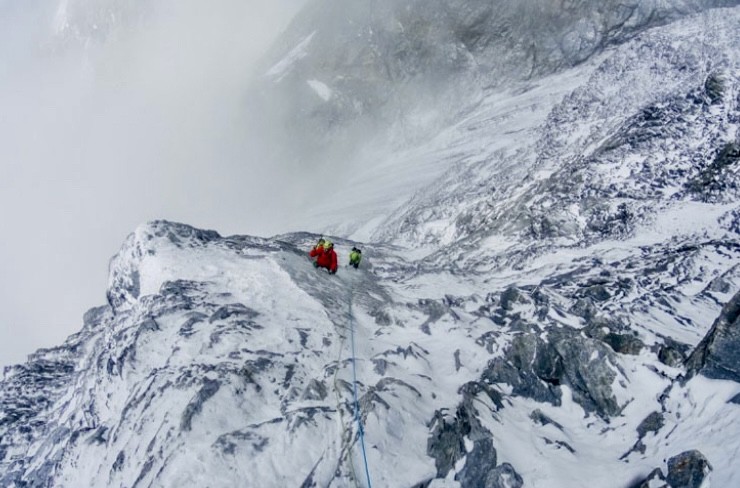
During the Austrian expedition to Nilgiri South. Photo: Hansjorg Auer
Nilgiri Central
Only three expeditions have tried Nilgiri Central (6,940m).
The first was a Japanese party from Matsuyama University, led by Masaki Aoki. The party chose the southeast ridge-south ridge route. Aoki, Toshiro Hamada, Kohichi Sakata, Yasuo Tsuda, and Junichi Yuyama topped out on April 30, 1979. This was the first ascent of this subsidiary peak.
In the autumn of the same year, another Japanese party attempted the west face. Led by Tsotomu Nishimura, they retreated from 6,000m because of falling ice.
The third expedition was a South Korean expedition led by Kim Ki-Heyg in the spring of 1982. Five members of the expedition (three South Koreans and two Nepalese sherpas) reached the summit on April 25 via the southeast face and southeast ridge.
Ten climbers have summited Nilgiri Central.
